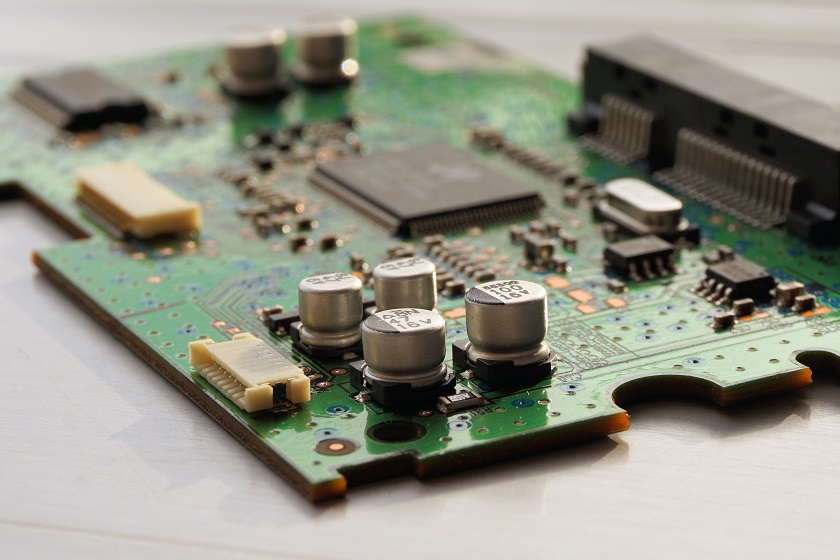Intel co-founder Gordon Moore noted a peculiar trend in the semi-conductors and electronics industry- an outline for the whole the semi-conductor industry to advance. The four and a half page article by Gordon Moore in the Electronics Trade journal was the most impactful article ever that led the basic foundation for the silicon based circuitry industry.
copyright by www.technowize.com
Moore was a Cal Tech PhD, cofounder of Fairchild Semiconductor and head of its research and development laboratory. Fairchild has been specially founded to develop transistors from silicon rather than germanium.
 Moore’s Law
Moore’s Law
From 1958, since the invention of the first integrated circuit till 1965, the number of components or transistor density in an integrated circuit has doubled every year, marked Gordon Moore. The statement which was initially an observation was labelled as Moore’s law later in 1970 by Caltech professor, VLSI pioneer and entrepreneur Carver Mead. The phrase then was caught by the electronics Industry as a core principle. The latest prediction of Moore was factored by Intel executive David House stating that computer performance doubles every 18 months following the Moore’s latest prediction. So when Intel, the pioneer of chip developments adapted Moore’s law as standard principle for advancing the computing power, the whole semi-conductor industry followed this outline on their chips.
The Law and its Limits
Moore’s law is basically about transistor density, but there are many versions of the Moore’s law for other capabilities of digital electronics. Processing speed, RAM’s, sensor strength, pixel density or resolution, all have some direct relation with the number of components that fits into the integrated circuit. Since their inception, enhancements in all these capabilities have also increased exponentially. The chip making companies used to estimate that increasing the components density will lead to an increase in computing power by x times. The computing power required for the enhancements till now were the consequence of adaption of Moore’s law. The effects of Moore’s law have far fetching implications on technological development. Since last five decades, the advancement from slow running, huge-sized computers to the developments of artificial assistants and AI powered devices, Moore’s holds the credit. Since last five decades, Moore’s law has been a recurring set of deadlines that the chip developers excelled to meet to double their computing power. But the soaring demand for smaller, faster and more efficient computers bound a limit line for Moore’s law to extend anymore.
read more – copyright by www.technowize.com


Intel co-founder Gordon Moore noted a peculiar trend in the semi-conductors and electronics industry- an outline for the whole the semi-conductor industry to advance. The four and a half page article by Gordon Moore in the Electronics Trade journal was the most impactful article ever that led the basic foundation for the silicon based circuitry industry.
copyright by www.technowize.com
Moore was a Cal Tech PhD, cofounder of Fairchild Semiconductor and head of its research and development laboratory. Fairchild has been specially founded to develop transistors from silicon rather than germanium.
From 1958, since the invention of the first integrated circuit till 1965, the number of components or transistor density in an integrated circuit has doubled every year, marked Gordon Moore. The statement which was initially an observation was labelled as Moore’s law later in 1970 by Caltech professor, VLSI pioneer and entrepreneur Carver Mead. The phrase then was caught by the electronics Industry as a core principle. The latest prediction of Moore was factored by Intel executive David House stating that computer performance doubles every 18 months following the Moore’s latest prediction. So when Intel, the pioneer of chip developments adapted Moore’s law as standard principle for advancing the computing power, the whole semi-conductor industry followed this outline on their chips.
The Law and its Limits
Moore’s law is basically about transistor density, but there are many versions of the Moore’s law for other capabilities of digital electronics. Processing speed, RAM’s, sensor strength, pixel density or resolution, all have some direct relation with the number of components that fits into the integrated circuit. Since their inception, enhancements in all these capabilities have also increased exponentially. The chip making companies used to estimate that increasing the components density will lead to an increase in computing power by x times. The computing power required for the enhancements till now were the consequence of adaption of Moore’s law. The effects of Moore’s law have far fetching implications on technological development. Since last five decades, the advancement from slow running, huge-sized computers to the developments of artificial assistants and AI powered devices, Moore’s holds the credit. Since last five decades, Moore’s law has been a recurring set of deadlines that the chip developers excelled to meet to double their computing power. But the soaring demand for smaller, faster and more efficient computers bound a limit line for Moore’s law to extend anymore.
read more – copyright by www.technowize.com
Share this: